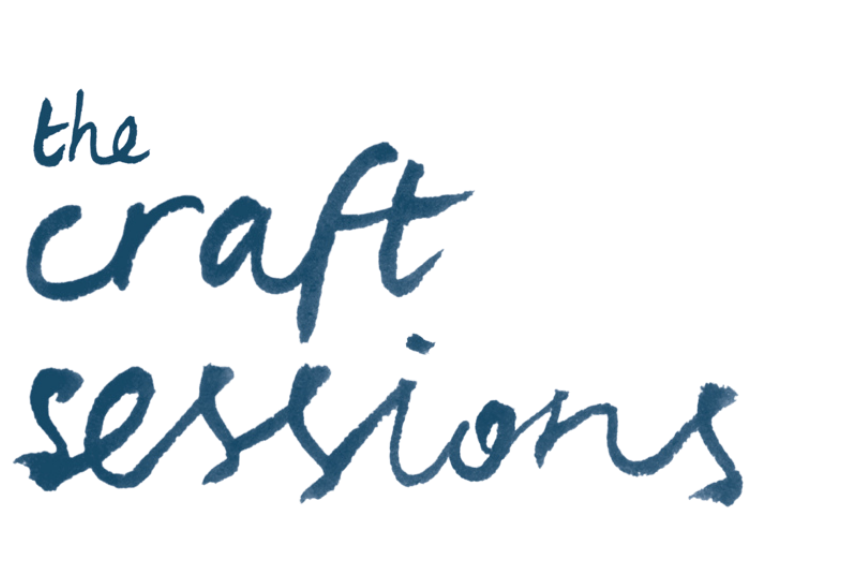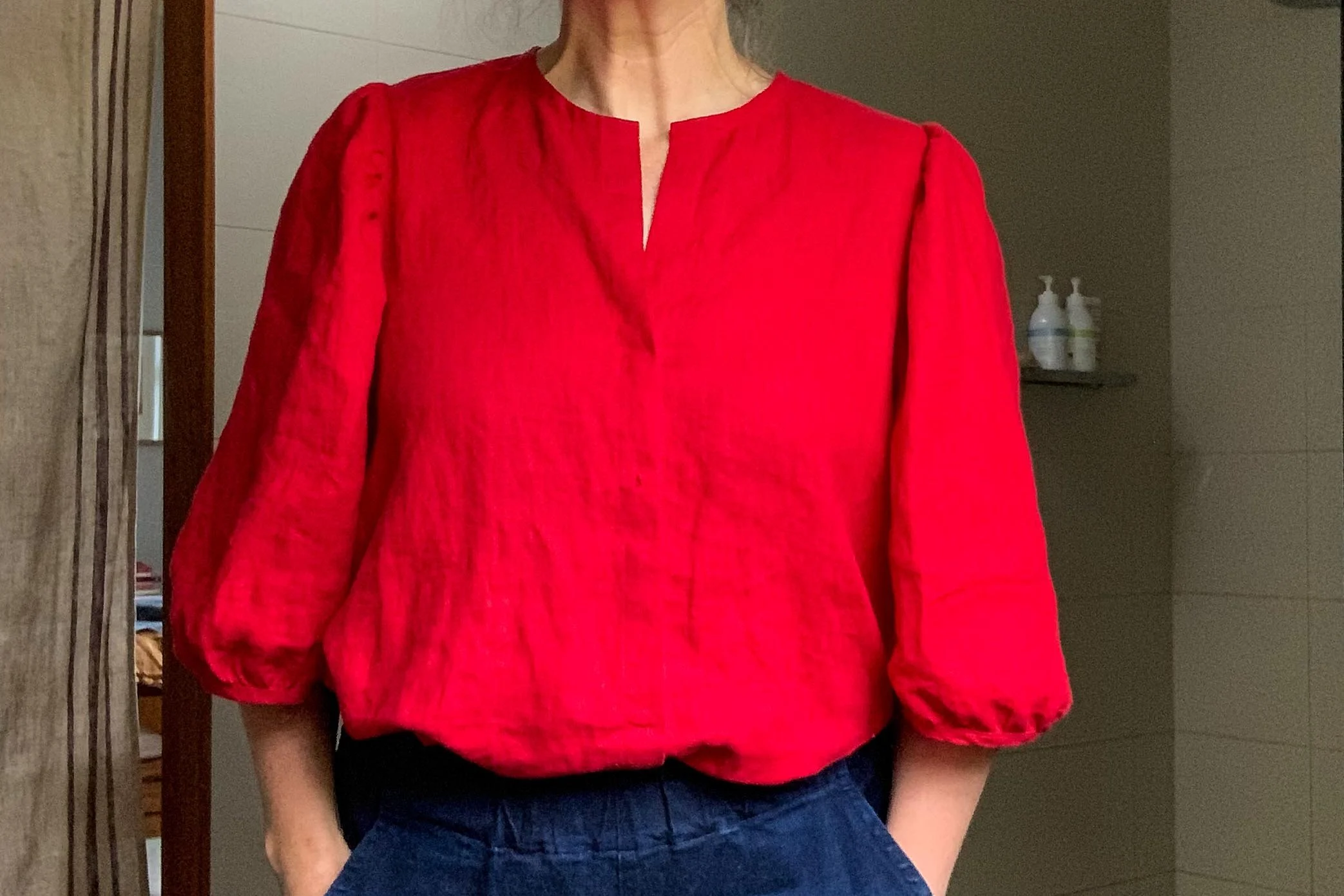Let's start with a statement of truth from one of my favourite all-time knitters, the marvelous Elizabeth Zimmermann.
“Speed is not necessary in knitting”
And it’s not. To get the benefits, and the joy of knitting, you just need to be knitting.
My title is slightly misleading; what I really want to talk about is how to improve your output - so we are talking about speed but we also want to talk about output. We are talking about how to get through your knitting faster. This involves two things; how to knit more often and how to knit faster.
I want to stress that this shouldn't be stressful. You all probably know my feelings about knitting by now. Knitting shouldn't be about fear and it shouldn't be about stress. Think meditation and joy! That's what I am on about.
Personally I believe that my output is mainly because of the stuff I've written about before; making is an everyday habit for me and I have a few tricks to find extra time in my life to knit. I am not a particularly fast knitter but over time I have consciously tried to work on my speed and technique. For me, the biggest efficiencies have come from learning to knit without looking, and making more efficient movements (I'll talk about this more in a minute).
Speed in knitting doesn't necessarily involve changing your style. One option is that you just look for efficiencies in the style you currently use. But, by being aware of the different styles that are possible, you can look for other ways to improve your speed.
Where should we start? This post will talk about
- How to learn to knit without looking.
- When to make changes to your style.
- How to work on efficient movement and transitions.
- What other styles you could look at to improve your speed.
Time for a second statement of truth. "You can have an awkward-looking slow technique and still be a fantastic knitter". If you have even tension, and know about the technical aspects of knitting, your knitting will be wonderful - even without having "good" technique. Your style is your style. There are no rules about what your style should be! However, improving your technique often makes the process more enjoyable, speeds you up and takes out the awkward.
And a third statement of truth is that "Change to your style will feel awkward! That doesn’t mean you aren’t doing it right or it will stay like that. Push through the pain barrier for a bit to figure out if it is for you".
You can get faster!
1. LEARN TO KNIT WIThout looking
This doesn't increase your speed, but it does make your knitting output increase. Knitting without looking means you can knit while having a cup of tea with your partner while making them feel like they are your one-and-only focus - this is a key knitter's skill! You can knit while in the car without getting carsick and you can knit at the movies once the lights have gone down. I really believe you can do this. Yes you!
I've been thinking about how to explain how to do this as I often hear people saying "I've tried but I can't". The most important thing to remember is that this is a fingertip experience. Your fingertips do all the work and they just need some training.
I recommend sitting down a few days in a row to solely focus on this. Sit and concentrate. Start with a yarn that is at least a DK and preferably a round yarn. DK+ makes big individual bumps for you to feel on the needle. Use needles you are comfortable with and a yarn that is stickier (like 100% wool) rather than silky or floppy (like silk or alpaca). The stickiness means that it retains it's shape and isn't trying to slip away while you are learning. And maybe use a swatch to try this on so you aren't worried about making errors.
Try to do one stitch at a time initially. Then try two. Initially you will really need to concentrate, but eventually it becomes like breathing.
This is just how I do it - you might do it differently - I'm going to split this up a bit to see if I can give you a process for figuring this out;
- Load the stitches towards the end of the left hand needle so they are close to the tip with your eyes open. Feel the stitches between your thumb and forefinger to get used to how they feel. Watch yourself flatten out a stitch - by that I mean to push the right hand side of the stitch forward with your thumb - your forefinger is what you are pushing it against so it doesn't slip off.
- Close your eyes and insert the needle into the first stitch by sliding the right hand needle tip along the top of your thumb, through the stitch and over the top of your forefinger. .Wrap the yarn around and use your left forefinger and thumb to move the stitch off the needle.
- Then try to feel the individual bumps with your left hand fingers and move another stitch towards the end of the left needle to get it ready and then insert the right. Flatten the stitch out with your thumb and forefinger and do it over again.
2.When to make changes to your style
This obviously depends on your personality and how you are feeling. To my mind there are two options - one project at a time, improving little bits as you go, or you could choose a new style and go cold turkey.
Personally I don’t tackle everything that I want to change in one go – mainly because I need knitting for daily joy, and so to have that joy be stifled by laborious knitting wouldn’t work for me. So I make a change to my technique at the start of a new project – and keep knitting all my other projects with my previous technique. I make a whole garment in the new style before deciding if I want to keep the change. This is not necessarily ideal. I would probably learn much faster by switching totally and sticking to it. But the way I do it means I get to see if my changes work. By the end of a project I can feel if it makes sense to me and is comfortable.
Obviously you should do what is best for you, but try not to switch midway through a project as your tension can change dramatically with a different technique.
I make some kind of change to my knitting style about once a year. Just a tweak here and there, or I concentrate on fixing some particular problem.
3. Look at improving your efficiency
Efficiencies in movement and transitions are where most of my speed improvements have come. When you knit a stitch you are putting one needle tip into a loop on the other needle. You then wrap the yarn around the needle tip and pull it back through the loop. In that process there are many movements and then transitions between those movements and that is where you can find efficiency. Look at each one of these movements individually and figure out whether there is anything you can do to make it smoother. Can you hold the needle or the yarn differently? Can you change how you tension the yarn - around which fingers? Can you change the angle of the needles so that they are easier to manipulate?
There are four key areas (I can think of!!) to look at when considering what improvements you could make.
- How you hold the needles, from above or below.
- How you tension your yarn, around which fingers.
- How you wrap the yarn around the needle tips - throwing, picking or flicking.
- The angle with which the needle tips meet - could be almost parallel facing one another, at 90 degrees or heading towards parallel.
Play around with these things and see if there is a way you can make a movement more efficient. How could the arc of your yarn take less time? Could you change the angle of how your needles meet to make getting the completed stitch off quicker?
Which leads on to an obvious topic….
4. Consider changing your style
Alrighty then - let's get to the controversial topic - knitting style and which one is "the best"!! These are just my opinions and you may not agree, so please feel free to disagree vehemently in the comments. I love learning new stuff.
a. I don't believe there is a right or best way to knit. Everyone has different hands and arms. Size, mobility and flexibility all affect what is most comfortable for us. Comfortable often = efficient movements and efficient generally = speed. Not always but often.
b. That said, some knitting styles involve movements that lend themselves to speed - for example continental knitting involves scooping the yarn which generally involves one less movement than English throwing and therefore is generally more efficient.
Investigate the different styles. The four most distinctive style groups I've come across are;
- English throwing - also known as right handed knitting
- Continental picking - also known as German, European, left handed
- Lever - also known as Irish Cottage, pivot knitting, static needle
- Portuguese
I made you a little video the other night - that demonstrates the four different main styles - as I couldn't find one that ran (quickly-ish) through all styles so I didn't have to link to a million different videos. It's my first video and I did it with a static camera so please excuse its quirks. I am using a big yarn with 6mm wooden needles so you can see the movements I am making more easily. It does however make my knitting a bit slower and more awkward looking than it would if I was using my normal setup - so please don't let that put you off investigating another style if you see something you like.
The four main styles of knitting done with varying levels of competence ;)!
The two people I mention in the video are The Yarn Harlot lever knitting - please go and look at this as it is a truly beautiful thing and then follow that up by looking at Eunny Jang and her gorgeous continental knitting. So clever!
Remember that there is nothing wrong with making up your own style or choosing parts of styles. As I said in the video - my current style is a mixture of English flicking (not really throwing) and lever knitting (or Irish cottage knitting). It is quite a big movement but is more efficient for me on the whole than continental knitting. This is because I am yet to master Continental purling. My continental knitting is lovely and fast, but my purling is a dog's breakfast of inefficiency and awkwardness.
This post is getting too long so I'm going to stop now, but I hope it's given you some ideas for how to work on your speed and your output. As always love to hear your thoughts and happy to answer your questions!
Felicia x
AN UPDATE: There have been so many good questions I've done a followup post - How to Get Faster At Knitting - Part 2! It includes a video on how to learn to knit without looking.





